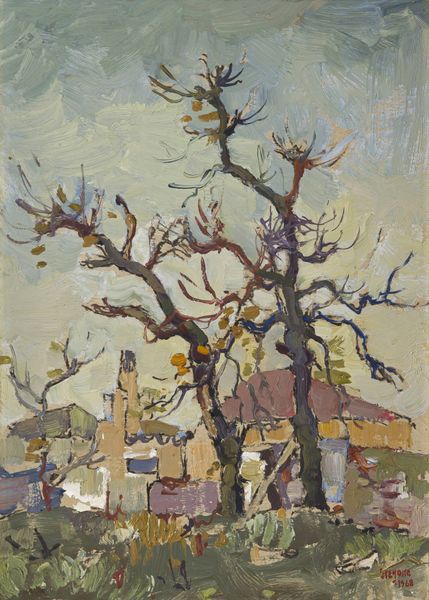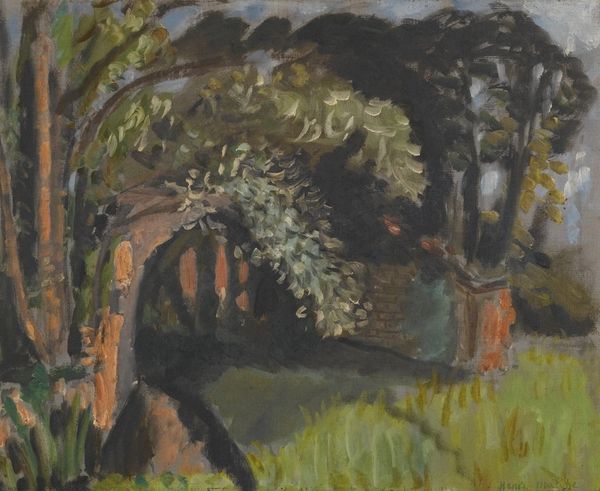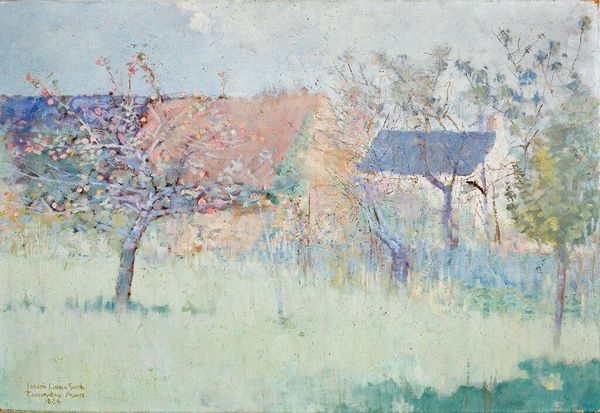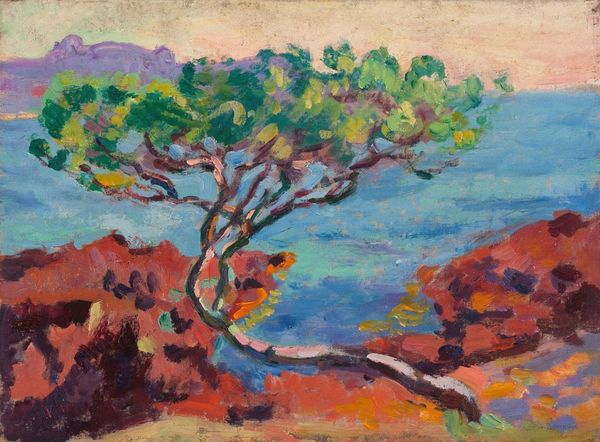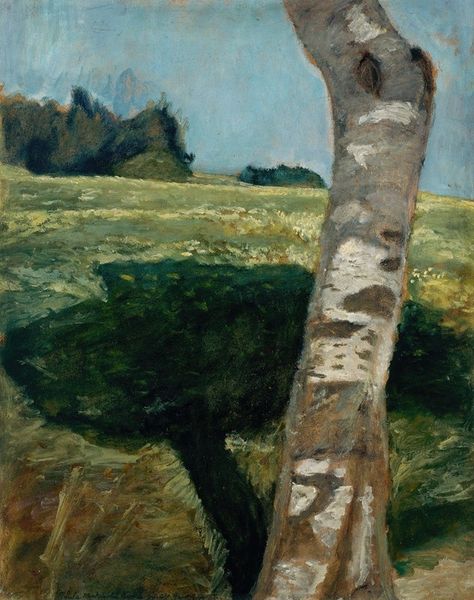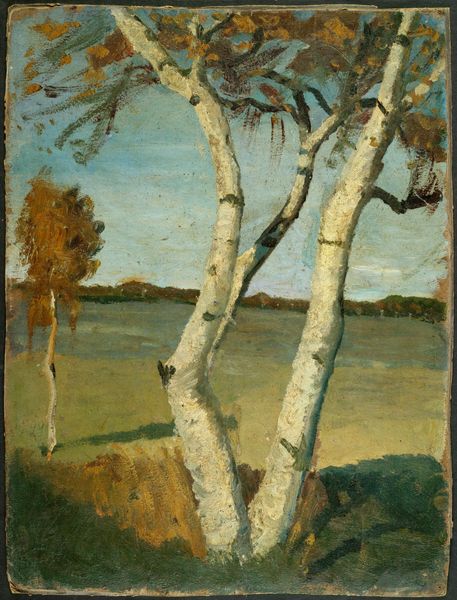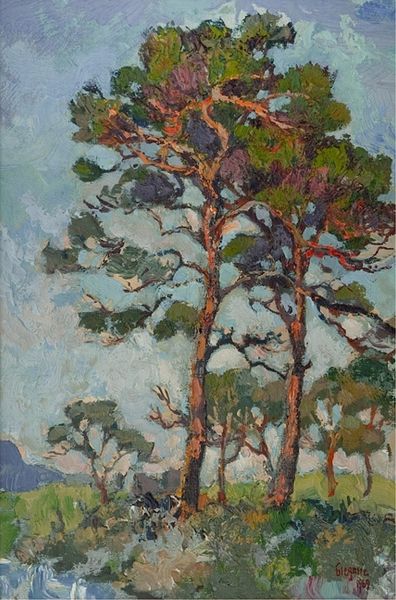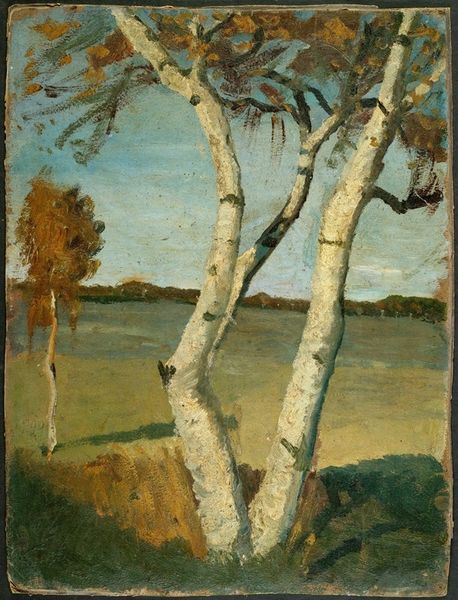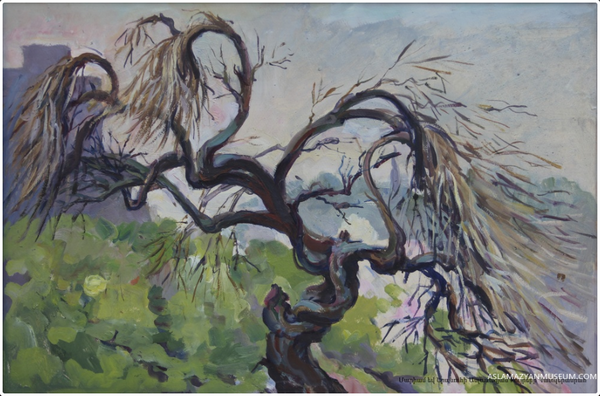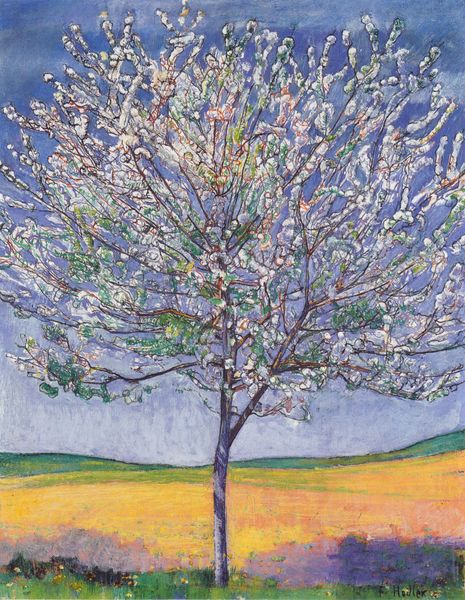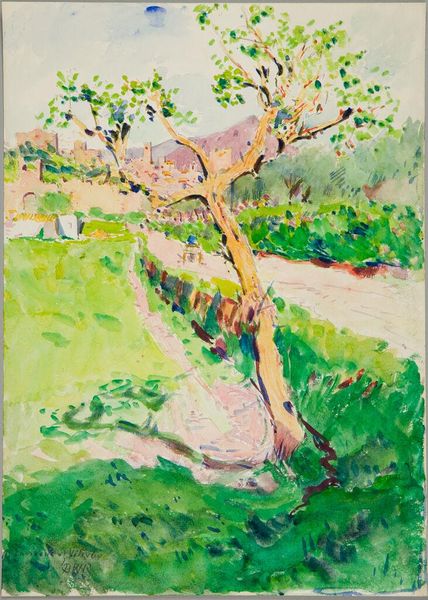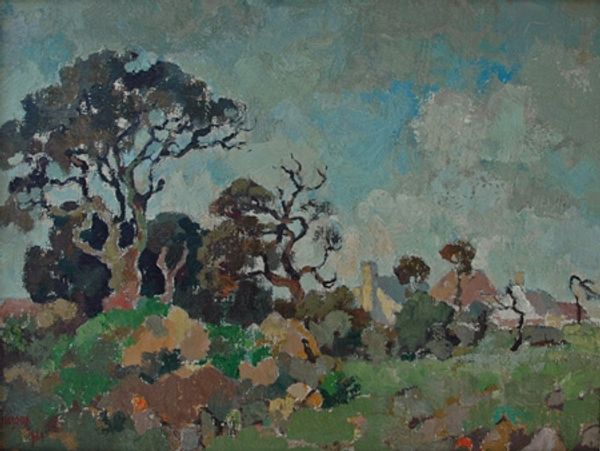
painting, plein-air, oil-paint, impasto
#
painting
#
plein-air
#
oil-paint
#
landscape
#
german-expressionism
#
impressionist landscape
#
figuration
#
oil painting
#
impasto
#
expressionism
#
post-impressionism
Copyright: Public Domain: Artvee
Editor: This is Paula Modersohn-Becker’s "Man lying beneath a Blossoming Tree," created in 1903 using oil paint. The texture looks quite thick, and the figure beneath the tree seems almost enveloped by the landscape. What stands out to you most in this composition? Curator: It is the relationship between form and colour. Observe how Modersohn-Becker employs a limited palette, predominantly earth tones juxtaposed with the pale blossoms, creating a sense of tonal harmony. Consider also the flattening of perspective; space is evoked not through traditional linear perspective but rather through planes of colour and the application of paint itself. The heavy impasto, particularly noticeable in the tree, draws attention to the materiality of the paint and its role in constructing the image. Editor: So the brushstrokes themselves are almost as important as what they depict? Curator: Precisely. This treatment aligns with the Expressionist movement's emphasis on subjective experience and the emotional impact of the work. Are you noting the structural elements such as how the figure is compressed, echoing the compressed picture plane itself? Editor: Yes, the man is nearly part of the ground. It looks almost abstract because he is blended with the colours and the textures. He looks relaxed! It's such an amazing painting. Curator: I agree. Modersohn-Becker compels us to consider not only what is represented, but more importantly, how it is represented through the manipulation of formal elements. The subjective rendering enhances the viewing experience through the interaction of texture and color. Editor: I've learned a lot today! Thanks for providing insights into form and color of "Man lying beneath a Blossoming Tree."
Comments
No comments
Be the first to comment and join the conversation on the ultimate creative platform.
